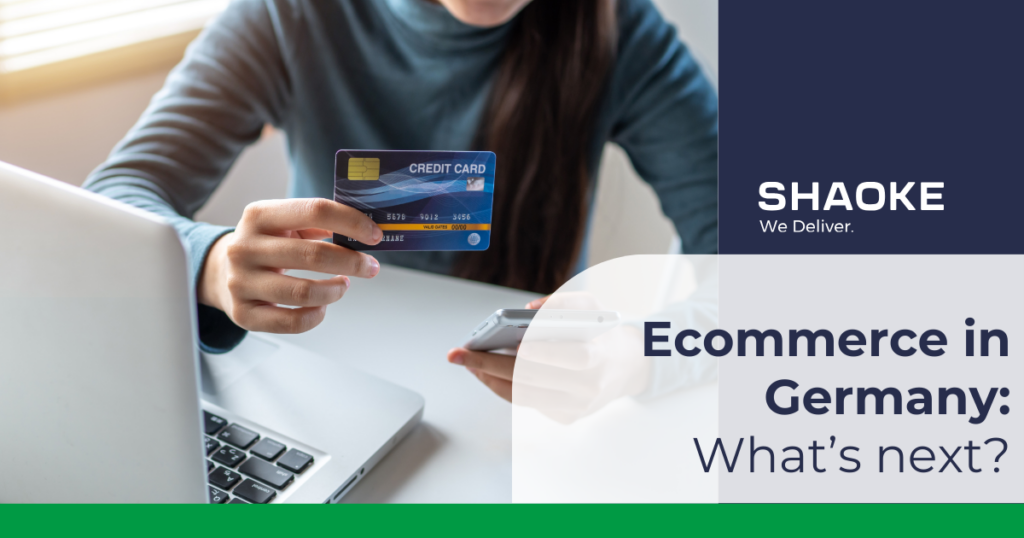
Germany’s e–commerce landscape: Current status and 2025 outlook
Germany’s e-commerce sector has long been a powerhouse within Europe, and while it faced challenges in recent years, the outlook for 2025 remains cautiously optimistic. In 2024, Germany’s online retail market reached €80.6 billion, showing a modest increase of 1.1% from the previous year. This growth, although modest, signals recovery after the dip caused by inflation and the economic uncertainty that affected global markets. According to projections from the Bundesverband E-Commerce und Versandhandel (BEVH), Germany’s e-commerce sales are expected to continue their upward trajectory, with a forecasted growth of 2.5% in 2025, bringing the market to over €82 billion. The recovery is fueled by multiple factors, including increasing consumer confidence, improvements in technology, and more streamlined logistics that reduce delivery times.
Fashion e-commerce: A sector driving growth
One of the most significant sectors contributing to the growth of German e-commerce is fashion. In 2024, the fashion e-commerce market is expected to see a considerable rise, with revenues projected to reach $32.73 billion by 2029, marking an impressive 47.81% increase from 2024. Germany’s high internet penetration and its consumer base’s preference for online shopping are critical drivers behind this growth. With platforms like Zalando and About You at the forefront, the fashion sector has seen an expansion in both market share and consumer reach. These e-commerce platforms have become more than just retailers; they have built complete ecosystems, offering everything from personalized shopping experiences to integrated logistics systems, making them highly efficient and consumer-friendly. As the demand for fashion products continues to grow online, this sector is expected to be one of the key pillars supporting Germany’s e-commerce boom over the next few years.
The rise of social commerce in Germany
A big shift in Germany’s e-commerce landscape is the rise of social commerce. Consumers are increasingly turning to social media platforms like Instagram, TikTok, and Facebook to discover and purchase products directly within the apps. In fact, a recent study shows that nearly 40% of German consumers have made at least one purchase via social media in the past year. This trend is not just about convenience but also about the power of influencer marketing and user-generated content. Social commerce allows brands to leverage these platforms to create engaging, interactive shopping experiences. As social media becomes a more integrated part of the consumer journey, German businesses are optimizing their strategies to drive sales directly through these channels. This growing trend is expected to continue in 2025, with companies looking to further personalize shopping experiences, offering curated recommendations and targeted ads that align with consumer preferences.

Projected growth: E-commerce spending on the rise
The future of e-commerce in Germany looks promising, with e-commerce spending expected to grow at a steady pace. By 2029, household spending via e-commerce is projected to reach €146 billion, growing at an annual rate of 7.8%. This increase reflects the continuing shift in consumer behavior towards online shopping and the digitalization of the economy. As more people across Germany and Europe become accustomed to buying products and services online, the overall market size will continue to expand, outpacing traditional retail channels. Additionally, the development of better technologies for e-commerce platforms, such as AI-driven recommendations, more efficient payment systems, and innovations in product delivery, will further contribute to this growth. The strong upward trend in digital spending showcases how essential e-commerce is becoming in the modern economy and how it’s increasingly integral to consumers’ everyday lives.
Challenges facing e-commerce: Logistics and returns
While the outlook for e-commerce in Germany is positive, the industry is not without its challenges. One of the most persistent issues is the high return rate that many online retailers face, particularly in sectors like fashion. In Germany, return rates can be as high as 40%, which puts pressure on e-commerce businesses to manage returns efficiently. Additionally, logistical challenges, such as ensuring timely deliveries and managing costs, continue to be an ongoing concern for companies looking to maintain profitability while keeping customers satisfied. Innovations in reverse logistics and automation could help address these issues, but they require significant investment and planning. E-commerce businesses that can successfully tackle these challenges will not only improve operational efficiency but also enhance the overall customer experience, which is vital in retaining loyal customers and growing market share.
A bright but competitive future for e-commerce in Germany
Looking ahead to 2025, Germany’s e-commerce market will continue to grow, albeit at a measured pace. The fashion sector, in particular, will remain a driving force, while mobile commerce will further solidify its place as a primary shopping method for consumers. As digital shopping habits continue to evolve, businesses will need to focus on offering seamless, mobile-optimized experiences while addressing challenges like high return rates and efficient logistics. Innovations in technology, such as AI, machine learning, and automation, will play a crucial role in shaping the future of e-commerce. Companies that successfully adapt to these changes will be well-positioned to thrive in Germany’s increasingly competitive e-commerce landscape, meeting the growing demands of consumers while navigating the complexities of digital retail.
Sources
eCommerce Germany – German E-Commerce 2025 Outlook & Performance Trends
Statista – German E-Commerce Market Revenue Forecast (2025)
eCommerceDB – Fashion E-Commerce Growth in Germany
Reuters – Trends in German Mobile E-Commerce Usage
Payments Cards & Mobile – Consumer Spending Behavior in Germany (2024)
Waredock – Germany’s E-Commerce Market Growth Projections
IMARC Group – E-Commerce in Germany: Market Forecasts to 2029

